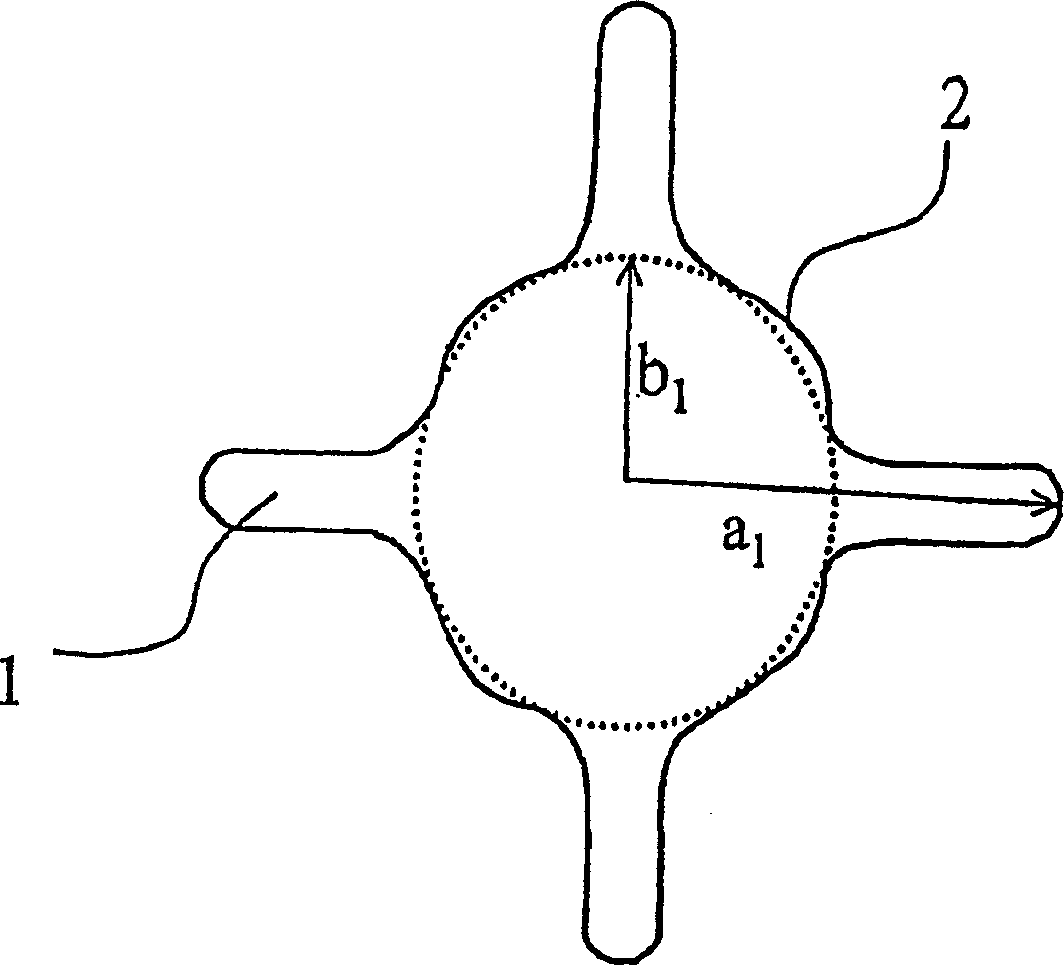Polyester fibers having deformed section
A technology of polyester fiber and special-shaped section is applied in the field of polyester fiber with special-shaped section, which can solve the problems of insufficient effect and insufficient improvement effect.
- Summary
- Abstract
- Description
- Claims
- Application Information
AI Technical Summary
Problems solved by technology
Method used
Image
Examples
Embodiment 1
[0256] Preparation of titanium compounds:
[0257] Prepare a 2L three-necked flask with a device capable of mixing and stirring the contents, put 919g of ethylene glycol and 10g of acetic acid into it, mix and stir, slowly add 71g of tetrabutoxytitanium to the mixture, and prepare the ethylene glycol of titanium compound solution (clear). This solution is hereinafter referred to as "TB solution". The titanium atomic concentration of this solution was 1.02%.
[0258] Preparation of phosphorus compounds:
[0259] A 2 L three-necked flask equipped with a device capable of heating, mixing and stirring the contents was prepared, 656 g of ethylene glycol was charged thereinto, and heated to 100° C. while stirring. When the above temperature was reached, 34.5 g of monolauryl phosphate was added, heated, mixed and stirred, and dissolved to form a transparent solution. Hereinafter, this solution is referred to as "P1 solution".
[0260] Catalyst preparation:
[0261] Next, ...
Embodiment 2-3、 comparative example 1
[0268] Replace the spinneret and replace the spinneret hole with one that can form figure 1 Except for the shape of (b)-(f) and the cross-sectional shape of a single fiber with a circular cross-section, it was carried out in the same manner as in Example 1. The results are shown in Table 1.
Embodiment 4
[0275] Mix 0.009 parts of tetra-n-butyl titanate (TBT) into a mixture of 100 parts of dimethyl terephthalate and 70 parts of ethylene glycol, and put the mixture into a stainless steel container capable of pressurized reaction, while pressurizing To 0.07MPa, and from 140 ℃ to 240 ℃, while carrying out the transesterification reaction, then add 0.035 parts of triethyl phosphonoacetate (TEPA) to terminate the transesterification reaction.
[0276] Afterwards, the reaction product was transferred into a polymerization container, the temperature was raised to 290° C., and the polycondensation reaction was carried out under a high vacuum below 26.67 Pa to obtain polyethylene terephthalate. At this time, titanium dioxide was added as a matting agent during the reaction to make it 2.5% by weight relative to the total weight of the polyester. The polyethylene terephthalate had an intrinsic viscosity of 0.62 and a diethylene glycol content of 1.5%. The obtained polyethylene terephthal...
PUM
| Property | Measurement | Unit |
|---|---|---|
| particle size | aaaaa | aaaaa |
| particle diameter | aaaaa | aaaaa |
| crystallinity | aaaaa | aaaaa |
Abstract
Description
Claims
Application Information
 Login to View More
Login to View More - R&D
- Intellectual Property
- Life Sciences
- Materials
- Tech Scout
- Unparalleled Data Quality
- Higher Quality Content
- 60% Fewer Hallucinations
Browse by: Latest US Patents, China's latest patents, Technical Efficacy Thesaurus, Application Domain, Technology Topic, Popular Technical Reports.
© 2025 PatSnap. All rights reserved.Legal|Privacy policy|Modern Slavery Act Transparency Statement|Sitemap|About US| Contact US: help@patsnap.com



